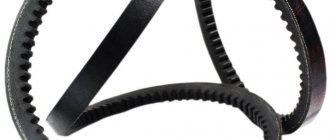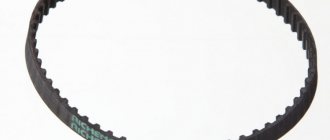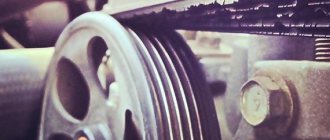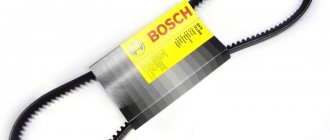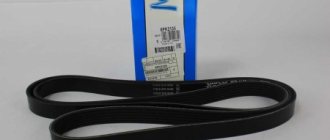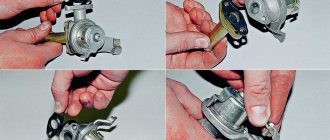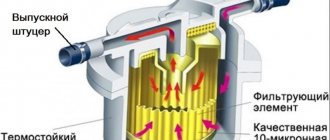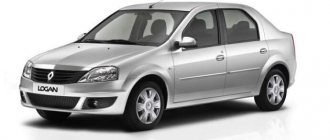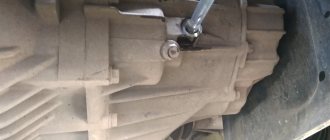What is a timing belt?
In a nutshell, the timing belt is a rubber belt with grooves on the inside that connects the crankshaft and camshaft of the engine. The crankshaft rotates due to pistons through connecting belts. This occurs on the same principle as the rotation of a bicycle gear. The camshaft must open the valves at the top of the piston movement, so it is necessary to synchronize the rotation of the camshaft and crankshaft. The timing belt serves this purpose. By means of teeth, it drives the pulleys of both shafts and regulates their rotation.
Do all cars have timing belts?
Strictly speaking - NO. On some cars, the crankshaft and camshaft are driven by a chain; in the design of some engines, the principle of connecting both shafts in an aggregate way is implemented.
When should you replace your timing belt?
Check the instructions or manual. The Japanese usually indicate the timing of replacing the timing belt with amazing accuracy. Usually the threshold is 100,000 km. mileage (this is what they recommend doing on Toyota), but it’s different for each car. Sometimes the timing belt “clings” to several other units in addition to the camshaft and crankshaft, which reduces its service life.
Is it worth replacing the water pump along with the timing belt?
In principle it is worth it, but not necessary. If the timing belt also drives the water pump in your case, then definitely YES. This will help save time and money. If everything is somewhat simpler: your car is quite new, just from Japan, then you need to check the mileage (to be sure, it would not be a mistake to assume that it is not entirely accurate), then assess the condition of the engine by eye, and decide whether or not to change the pump along with timing belt. The design features of some engines do not allow replacing the timing belt without removing the water pump. If this is your case, then it is better to replace the pump at the same time as the timing belt. If the water pump in no way complicates the task of removing the belt and is peacefully attached at a distance, then there is no point in changing it without obvious signs of wear and leaks. In general, the decision is up to you, in the end, each case is unique, you need to be creative here.
Do the seals on the camshaft, crankshaft and water pump need to be replaced?
If they leak, then YES. It’s easier to change everything together, i.e. simultaneously with replacing the timing belt. If they don’t leak, then decide for yourself.
Is it worth replacing the sloth and tension roller?
If they are far from presentable, then it is better to replace them. The role of the “sloth” in the operation of the timing belt, as its name suggests, is simply to be... that is, to serve as an additional support for tensioning the timing belt. The video has a slightly different task. There are at least two types of tension rollers: spring and hydraulic. Spring rollers are located in an expanded groove and, due to the force of the spring, tension the timing belt. Hydraulic rollers are a little more complicated; in them, the spring energy is replaced by a special fluid that maintains the position of the roller. Therefore, whether or not to change the video with the “sloth” is a question of the effectiveness of their work.
The main problem with wear of drive belts at the initial stage is various creaks and twists during the rotation of the pulleys, transmitting torque to the engine attachments. If creaks and whistles occur, one of the drive belts may soon break. We offer you detailed information about these types of belts in modern cars. Our directory will help you find out when it is necessary to change drive belts, how to determine the degree of their wear, how a drive belt differs from a timing belt and what is the average cost of drive belts on the Russian market, as well as get answers to other questions related to these belts.
For the basics, let's dot all the i's by finding out what drive belts are.
Vehicle drive belt
is an element of a belt drive, a working part of vehicles and mechanisms that serves to transmit engine torque.
The transmission of torque occurs due to frictional forces or engagement forces (timing belts, V-belts).
There is an erroneous suggestion that the timing belt (the timing belt drive) does not belong to the drive belts. However, in reality this is not the case. The timing belt also falls into the category of drive belts.
Drive belts are divided into several types:
— Timing belt (timing belt drive)
— Drive belts for auxiliary components (engine attachments)
There are three types of car belts:
1. Timing belt - as a rule, toothed
2. V-ribbed belt transmitting engine torque to engine attachments
3. V-belt transmitting engine torque to engine attachments
Belts No. 2 and No. 3 in our country also have additional names: flat belt ( V-ribbed belt
) or ripple belt (
V-belt
).
Unlike timing belts, which are subject to strict requirements, such as mandatory timely scheduled replacement, in accordance with the service life established by the manufacturer, drive belts that ensure the operation of engine auxiliary equipment do not require such close attention.
However, this does not mean that they do not need attention. Their planned replacement is also periodically necessary. Moreover, it is undesirable to wait until the belts fail, since these belts ensure the operation of important equipment in the car (cooling, battery charging, air conditioning, etc.).
So, if you hear a squeak or whistle under the hood, we do not advise you not to pay attention to it. Remember that a foreign noise under the hood is not only a nuisance for your hearing. If there is a creaking or whistling sound, this indicates that the drive belt is slipping on the pulleys. So, if the belt is old, then its tension may weaken. As a result, this causes it to slip on the pulleys and produce a squealing sound during engine operation.
As a rule, if the belt is worn out or the tension is loose, in rainy and cold weather the slipping and squealing increases as the belt loses traction with the pulley due to moisture.
If you hear a single squeak or whistle of the belt, especially after driving through a deep puddle, then there is no cause for concern. In this case, it is more likely that the drive belt is too wet, which reduces its adhesion to the pulley. If you hear a whistling (squealing) sound after you started the car in the morning, as well as several kilometers when you start driving while the engine is warming up, then most likely your drive belts (or belt) have worn out or the tension of the drive belts has weakened.
A V-belt or poly-V belt is part of the engine drive belts, which serves as an auxiliary component that ensures the functionality of the power unit’s attachments (water pump, air conditioning, generator, power steering).
The rotation of the belt occurs from the torque of the engine during its operation. Torque is initially transmitted by the engine crankshaft. The torque is then transmitted via belts and pulleys to the auxiliary equipment under the hood.
Thus, the V-belt has a V-shaped cross section, which allows the belt to transmit torque to the pulleys of the vehicle's accessories. This type of belt transmission is called V-belt torque transmission.
So, this type of belt is often used to transmit engine torque to an electric generator, which charges the battery.
Thanks to the rotation of the generator, electricity is generated, which supports the operation of the vehicle's electrical equipment.
Also in many modern cars, this same type of belt is used to transmit torque to the electric power steering, cooling fan, water pump (coolant pump), air conditioning compressor and classic power steering. Since the belt is subjected to enormous loads and constant temperature changes, it is usually made of hard rubber and a metal core, which ensures the strength and durability of the belt. Also, many belts have a durable textile thread that allows the belt to withstand the transmission of high torque.
So, in addition to the timing belt (some cars also use a timing chain), any car has one or several belt drives (depending on the technical features of the car), which ensure the functionality of engine attachments.
If the drive belt is cracked (consequences)
If your car's drive belt (or belts) are worn out, they will show cracks and scuffs on the surface. Eventually they will begin to imagine whistling as they move. In this case, the time has come for their planned replacement. Remember that if you do not change the drive belt on time, you risk being left without functional vehicle equipment. So, if the belt’s service life has expired due to serious wear, then it will naturally break early or late.
As a rule, when the drive belt breaks, you will hear a deafening bang from under the hood. As a result, the equipment that received torque from it will cease to function. So, if the drive belt that powers the generator breaks, it will stop charging the battery and powering all the electrical equipment of the car. You will eventually see the battery icon illuminated on your dashboard.
Also, if the belt breaks, the power steering will stop sitting. As a result, your steering wheel will be quite hard to handle. But the most important problem when the drive belt breaks is the lack of rotation transmission to the water pump, which promotes the circulation of coolant through the engine cooling system. As a result, the engine may soon overheat. In this case, you must stop driving immediately and turn off the engine.
Therefore, while driving, always check the engine temperature sensor, which should show the same temperature of 90 degrees after warming up the engine. If you see that the temperature needle has gone up and is approaching the dangerous red zone, then you need to stand up and, turning off the engine, draw diagnostics of the cooling system.
Attention!
Overheating of the engine can lead to engine failure (damage to valve stem seals, failure of the head gasket, damage to the piston system). Therefore, do not allow the power unit to overheat under any circumstances by monitoring the engine temperature on the dashboard.
Modern drive belts have a long service life due to their construction from modern, reliable materials. On average, a quality belt can last up to 25,000 hours. Please note that service life is shown in hours, not kilometers, as mileage does not directly affect the service life of drive belts. After all, these belts are in motion even when the car is standing still and the engine is idling.
However, this is in theory, and according to information provided by belt manufacturers to consumers.
In practice, the service life of drive belts can differ significantly from that declared by the manufacturer. The fact is that the wear of drive belts is influenced by a lot of factors. Thus, an important role in the long service life of the belts is as if they were installed on a car. Thus, it is not uncommon for auto repairmen in technical centers, due to their low classification or lack of experience in car repairs, to try to put a belt on a pulley using a screwdriver. As a result, the newly made belt is damaged and will no longer be able to serve the period stated by the manufacturer. A similar method of installing the drive belt is also used to speed up the replacement process, so as not to remove the pulley.
In addition, the life of the belts is affected by the circumstances in which the components are stored in the warehouse and transported. So, it’s not uncommon for car dealerships to sell drive belts that have expired. Of course, drive belts have an expiration date. The fact is that the chemical composition of drive belt materials changes over time. And if the drive belt was manufactured 5 years ago and was stored incorrectly in the warehouse, then when installed on the car it will not last very long.
Weather can also affect the durability of belts in your vehicle. So, if you live in a hot climate, then you often use air conditioning. This means that the air conditioning compressor must receive more energy. As a result, the belt transmitting torque to the air conditioning compressor experiences increased load.
In particular, drive belts may soon wear out if the machine is operated for a long time in cold weather. So, in winter, the electrical equipment of the car requires more power than in warm weather.
As a result, the alternator requires more power to maintain the vehicle's electrical system. As a result, the alternator belt experiences increased load due to increased torque.
As a rule, drive belts in a new car last longer, as if they were installed at the factory and all necessary storage conditions were observed before installation. After replacing the factory drive belts, the life of the belts will be reduced.
Any car manufacturer in technical documentation and service books usually indicates during routine maintenance when it is necessary to regularly replace drive belts. Therefore, we advise you to carefully read the list of scheduled technical inspections and the regulations for replacing consumables. As a rule, the manufacturer indicates the maximum mileage at which technicians at the technical center must replace the drive belts. This way you will know approximately the service life of the drive belts. However, this does not mean that you should not regularly check the condition of your belts. More on this below.
Periodically, any car owner should test the condition of all drive belts and their tension. To do this, you need to feel the belts with your finger when the engine is off. This way, by pressing your finger on the belt, you can determine whether the tension of the belt drive has weakened. Remember that the belt should not move during this inspection (move 1-2 cm). If you see this, then the cause is weak belt tension. You should also inspect the belt by touch for damage. A visual inspection of the object for chips, cracks and torn elements is also necessary.
In addition, use a flashlight, which will not only make your vision better, but can also help identify worn areas of the belt (as a rule, worn areas of the belt will shine).
In any case, if you see damaged areas of the belt, then in any case it must be replaced with a new one. Please note that when purchasing new drive belts you will need to purchase original consumables. There are many non-original belts on the market, which often even surpass the factory originals in quality. So, Continental, which is the largest supplier of drive belts, has proven itself to be excellent.
The average cost of replacing a belt at a car repair shop is about 2,500 rubles. The cost of car belts depends on the popularity of the brand and the cost of production. There are both cheap drive belts on the market and also expensive ones that have a special design and are able to withstand extreme loads.
Function of drive belt (V-belt and poly-V-belt)
A V-belt or poly-V belt is part of the engine drive belts, which serves as an auxiliary component that ensures the operation of the unit’s outboard equipment (water pump, air conditioner, generator, hydraulic booster).
The rotation of the belt occurs from the torque of the motor during its operation. The torque is first transmitted by the crankshaft of the engine. Then the torque is transmitted through belts and pulleys to auxiliary equipment under the hood.
For example, a V-belt has a V-shaped cross-section, which allows the belt to transmit torque to the pulleys of the vehicle’s additional equipment. This type of belt drive is called V-belt torque transmission.
For example, this type of belt is often used to transmit engine torque to an electronic generator that charges the battery. Thanks to the rotation of the generator, electricity is generated, which supports the operation of all electrical equipment of the car.
Also, in almost all modern cars, the same type of belt is used to transmit torque to the electronic amplifier of the control mechanism, the cooling fan, the water pump (cooling water pump), the air conditioning compressor and the traditional power steering wheel. Because the belt is subject to enormous overload and constant temperature changes, it is usually made of hard rubber and an iron core, which ensures the strength and durability of the belt. Also, almost all belts have a strong textile thread that allows the belt to withstand the transmission of high torque.
So, any car, in addition to the timing belt (some cars also use a timing chain), has one or more belt drives (depending on the technical specificity of the car), which ensure the operation of the engine’s outboard equipment.
As if the drive belt is tightening, letting down or weakening
If the cause of the whistle, squeal or squeak is a belt that has become loose, causing it to slip on the pulleys, then if the belt does not show signs of wear or damage, in order to remove the extraneous sound, it is necessary to tighten the belt.
Using the generator belt as an example, this is done using a special adjusting bolt (on modern cars) or using an adjusting bar (on older cars).
So, to tighten the alternator belt on a modern car, you need to do the following:
— Loosen the generator mounting bolts slightly (upper and lower fastenings)
— Turn the adjusting bolt clockwise, moving the generator away from the engine block and simultaneously checking the belt tension level
— Then shade the nuts of the generator fastening elements
Please note that in some vehicle systems, the process of tensioning drive belts is too labor-intensive and requires the use of special tools.
Attention. A new generation of poly-V-ribbed elastic belts have become widespread on the market and in many cars at the moment. So, one of the world's famous manufacturers of such belts is Elast. Their products have proven themselves to be the best. This brand is the official supplier of many car factories. Elastic poly V-belts do not require tensioning, tightening, etc. Thanks to their design and material, such belts do not stretch. As a rule, such drive belts last about 120,000 kilometers.
However, a special tool is required for its initial tension.
Many cars also use special belt tension rollers, which saves drivers from constantly tightening belts. The only drawback of this design is that, as a rule, when replacing drive belts, it is also necessary to change the tension roller, as its reuse together with a new belt is impossible.
How to tighten a belt
If the surface If there are no cracks or breaks in the belt, try tightening it. This procedure is suitable for both Russian-made cars and foreign cars equipped with a manual manual tensioner, which is often the generator itself. The belt is tensioned until it stops sliding on the pulleys. The car owner should remember that excessive voltage loads the alternator bearings and causes them to stop working.
If the belt tension does not allow normal operation, replace the part. Do not install shims under the idler pulleys as this will increase the length of the belt.
Replacing drive belts at a technical center
Modern cars are equipped with sophisticated technologies and new complex engines with additional equipment. Most modern vehicles have very, very little space under the hood. In some cars there is simply no free space under the hood. Therefore, replacing drive belts on your own in new cars is not so easy. After all, in order to replace belts, it is necessary to dismantle a lot of equipment. And all this just to get to the belts.
As a rule, replacing drive belts together with rollers may take about 1.5-2 hours. The average cost of an hour in Russia at a given moment is about 35-50 dollars. Accordingly, the cost of replacing belts can range from 2,500 to 9,000 rubles (depending on the technical center, make and model of the car).
In older cars, the process of replacing drive belts usually takes no more than half an hour, as due to the simpler design of the engine compartment, access to the rollers and belts is easier.
Constantly checking drive belts
From time to time, any car owner must inspect the condition of all drive belts and their tension. To do this, you need to inspect the belts with your finger while the engine is off. For example, by pressing your finger on the belt, you can realize whether the tension of the belt drive has weakened. Remember that the belt should not move during this inspection (move 1-2 cm). If you see something similar, then the culprit is weak belt tension. You should also inspect the belt by touch for damage. A visual inspection is also needed for chips, cracks and torn parts.
In addition, use a flashlight, which will not only improve your visibility, but can also help identify worn areas of the belt (usually, worn areas of the belt will shine).
In any case, if you see damaged areas of the belt, then in any case you need to change it to a new one. Please note that when purchasing the latest drive belts, you do not need to obtain unique consumables. There are many non-original belts on the market, which often even surpass the factory originals in quality. For example, Continental, which is the largest supplier of drive belts, has proven itself unrivaled.
The average cost of replacing a belt at a car repair shop is about 2,500 rubles. The cost of car belts depends on the popularity of the brand and the cost of production. There are both cheap drive belts on the market and expensive ones that have an unusual system and are able to withstand extreme overloads.
How can I remove a whistling, creaking or cracking belt under the hood?
Unfortunately, tightening the belt does not always help eliminate belt squealing. In this case, of course, you need to change the belt to a new one. However, many owners prefer to delay this process for as long as possible. To do this, they purchase various sprays from auto stores that they spray on belts. As a result, this often helps amazingly.
However, unfortunately not for long. Some craftsmen even suggest using a screwdriver and a bar of soap while the engine is running to treat the side surface of the belt. We categorically do not recommend doing this, because on the one hand, it is very dangerous to do any work with rotating components while the engine is running, and on the other hand, the effect of such old-fashioned methods is fleeting.
But the timing belt can break prematurely. Any signs of replacement?
Yes, this can happen. For example, due to non-compliance with basic operating requirements: ingress of technical fluids, errors when installing the timing belt (misalignment, overtightening, incorrect installation of marks) or the use of low-quality parts. In addition, the belt can break due to faulty rollers and a jammed crankshaft, camshaft or pump. The latter is the most common, which is why it is recommended to change it along with the belt.
Signs such as unstable engine operation, for example, may indicate that a belt replacement is approaching. Also, do not neglect a simple visual inspection, which will help identify belt defects - delamination, protruding threads, tooth wear, large cracks and traces of oil on the surface. In such cases, delaying replacement is dangerous.
At the same time, if you find very tiny cracks that are barely visible to the eye, you shouldn’t worry too much, unless it’s a new acquisition. The timing belt is not so flimsy, since it consists of dense rubber with metallized elements that allow it to withstand the workload of all these declared thousands of kilometers. But yes, this is the first sign and over time the cracks will grow, becoming the basis for concern.
This is interesting: How to properly bleed the brakes on a VAZ
V-belt, poly-V-belt and timing belt - what's the difference?
The drive belts of engine attachments should not be confused with timing belts, which synchronize the operation of the valves in the cylinder head with the piston system of the engine block using the camshaft.
As a rule, the timing belt is made of a completely different material from the alternator drive belts and other auxiliary equipment. Also, in some cars, the water pump drive is driven not by a V-belt or poly-V belt, but by a timing belt, which, due to the special design of the engine, in addition to powering the water pump, synchronizes the operation of the valves with the pistons.
The timing belt is made from a plastic composite material and has a lot of special teeth that protect the belt from slipping. This is necessary so that the valves work synchronously with the piston system and do not meet each other. After all, if the timing belt slips, the timing of the gas distribution mechanism will be disrupted and the engine will not be able to sit or will fail.
The timing belt also tends to stretch and has maximum service life. This belt requires closer attention, since if it wears out and breaks, the car’s engine can be seriously damaged, which will ultimately lead to huge waste of money.
Read more about this here.
When and how to change the V-belt.
The main problem with the wear of drive belts at the initial stage is various squeaks and twists during the rotation of the pulleys, transmitting torque to the outboard equipment of the motor. If creaks and whistles appear, one of the drive belts may soon break. We offer you detailed information about these types of belts in modern cars. Our guide will help you find out when you need to change drive belts, how to find the degree of their wear, how a drive belt differs from a timing belt and what is the average cost of drive belts on the Russian market, and also get answers to other questions related to these belts.
First, let's dot the i's and find out what drive belts are.
A vehicle's drive belt is an element of a belt drive, a working part of the vehicle and devices, which serves to transmit the torque of the motor.
The transmission of torque occurs due to frictional forces or engagement forces (timing belts, cone-shaped belts). There is a misconception that a timing belt (a timing belt drive) is not a drive belt. But in essence this is not the case. The timing belt also belongs to the group of drive belts. Drive belts are divided into several types:
– Timing belt (timing belt drive)
– Drive belts of auxiliary components (motor outboard equipment)
There are three types of car belts:
1. Timing belt - usually toothed
2. Poly V-belt transmitting motor torque to outboard motor equipment
3. V-belt for transmitting motor torque to outboard motor equipment
Belts No. 2 and No. 3 in our country also have additional names: thin belt (V-ribbed belt) or ripple belt (V-belt).
Unlike timing belts, which are subject to strict requirements, such as mandatory timely scheduled replacement, in accordance with the service life established by the manufacturer, drive belts that ensure the operation of auxiliary (outboard) engine equipment do not require such close attention.
But, nevertheless, this does not mean that they do not need attention. At times, their planned replacement is also necessary. In this case, there is no need to wait for the moment when the belts fail, since these belts ensure the operation of the main equipment in the car (cooling, charging the battery, air conditioning, etc.).
So, if you hear a squeak or whistle under the hood, we do not recommend that you ignore it. Remember that extraneous noise under the hood is not only a problem for your hearing. If there is a creaking or whistling noise, this indicates that the drive belt is slipping on the pulleys. For example, if the belt is old, its tension may weaken. Ultimately, this causes it to slip on the pulleys and produce a squealing noise while the engine is running.
Usually, if the belt is worn out or the tension has weakened, in rainy and cool weather the slipping and whistling intensifies as the belt loses traction with the pulley due to water. If you heard a single squeak or whistle of the belt, especially after driving through a deep puddle, then there is no cause for concern. In this case, the faster drive belt is very wet, which reduces its adhesion to the pulley. If you hear a whistling (squealing) sound after you started the car in the morning, or a few kilometers when you start driving while the engine is warming up, then most likely your drive belts (or belt) have worn out or the tension of the drive belts has weakened.
How can I temporarily replace drive belts if my car breaks down on the highway?
Unfortunately, it is impossible to temporarily replace drive belts with something if they break on the highway in modern cars. In older cars, women's tights sometimes helped with a similar problem. However, those times are gone. If the drive belts break, you will need technical support.
Information publication: Traffic police news, accidents, traffic fines, traffic police, Online traffic rules test. Technical inspection
An unpleasant whistle under the hood of a car immediately annoys a caring, experienced owner. Indeed, you should be on guard here, because this often indicates wear on the alternator belt. How often and when should the alternator belt be changed?
How often should the timing belt be changed?
The timing belt of an eight-valve engine needs to be changed after every 50,000 km.
For sixteen-valve engines, this spare part wears out faster and requires replacement after 40,000 kilometers.
Based on these figures, the average replacement period is around 50 thousand km.
Experts recommend checking the belt tension at 25 thousand km and, if necessary, tightening it. If soon after replacement you had to change the part again, but the rollers remained, this is worth taking into account. Then from the service life of the new part you will have to subtract the number of kilometers that the rollers worked before. However, it is recommended to change the rollers along with the belt.
Complete set of new timing belt
Many manufacturers indicate that when used in hot climates, service life is reduced by 25-30%. You should always take into account the make of the car and follow the recommendations of the automaker. In rare cases, the resource can reach up to 90,000 km.
You can compare the frequency of replacing the timing belt with other parts in the table:
| Parts replacement work | Car mileage in km (average values) |
| Oil and oil filter | every 80,000 |
| Fuel filter | 30 000-120 000 |
| Brake fluid | every 60,000 |
| Manual transmission oil | every 70,000 |
| Automatic transmission oil | 60 000-70 000 |
| Power Steering Hydraulic Fluid | every 80,000 |
| Timing belt with rollers | 50 000-60 000 |
| Coolant | 40 000-50 000 |
How to determine wear
Visually assessing the condition of the belt is the surest way to determine when to replace it. If there are visible signs of wear on the material - cracks, delamination, fraying of threads, etc., you should not put off replacing the element. Moreover, this threatens complete failure of not only the belt, but also the gene itself, and with it the general electrical circuit system.
ATTENTION! A completely simple way to reduce fuel consumption has been found! Don't believe me? An auto mechanic with 15 years of experience also didn’t believe it until he tried it. And now he saves 35,000 rubles a year on gasoline!
Another way to help determine when to replace a belt is to check the mileage of the vehicle. If the car travels 40-50 thousand kilometers, the belt definitely needs to be updated.
Attention. These data may vary slightly depending on the specific brand and technical characteristics of the car.
The time to replace the belt is also determined by secondary signs. For example, a characteristic symptom of its wear is a whistle coming from under the hood of the car. It increases with any electrical load. For example, if you turn on the optics or try to apply gas, there will be more noise.
The whistling of the belt is not a problem, but just a pointer. It will help identify an incipient flaw and let you know that a replacement will soon be needed.
As a rule, belt noise indicates weak belt tension. In such a situation, the gene begins to work under excess load, and it gives an incomplete charge to the battery.
The belt problem in top-end car configurations is immediately indicated by an indicator. It even automatically determines how bad the item is.
However, a whistle does not always indicate a weak belt. This type of noise can occur for various reasons. For example, if during the last replacement you, or the previous owner of the car, installed an oak belt. Oak – that is, made from low-quality rubber. It is clear that it will begin to whistle not only due to weak tension, but also due to drops of water or oil getting on the material.
An unpleasant noise will be heard from the oak belt even in winter, in cold weather. The belt hardens and begins to emit a nerve-wracking whistle.
The gene belt is located to the left of the internal combustion engine, if you are facing the car. Inspection of the part must be carried out with the ignition turned off and the battery terminal disconnected.
It can also be located in other places, it mainly depends on the car model. But you should always look for the belt near the gene and the tensioner.
For example, here in the photo: the blue arrow points to the gene, the yellow one to the tension roller, the red one to the belt.
How to check the belt?
You should not only check the condition of the belt, but also periodically. Most car manufacturers recommend visually checking the belt and its tension every 6 months or after 25,000 kilometers. km. It doesn't matter whether the car is driving or parked.
Approximate sequence of checks:
- Open the hood of the car. The drive belt is located on the pulley on the crankshaft side. Carefully check the condition and voltage while staying away from the cooling system fans. This is due to the fact that the fan can start at any time, even when the engine is cold.
- Check visual condition by holding the inside of the belt towards the light. Cracks, abrasions and peeling of the product are unacceptable. If the damage occurs in a small area, the belt is considered unsuitable for further use. The element is pulled through the crankshaft crank using a central nut.
- The tension is checked and the deflection is measured under a load of 10 kg. When the distance between the pulley axes is up to 300 mm, the deflection beam should be 6 mm. With a distance between the axes of 300-450 mm, a deflection of 12 mm is allowed.
Check the tension of the generator belt with maximum load, i.e. turn on all energy consumers except the starter. If there is no whistle, the tension is sufficient.
Reasons why the alternator belt breaks
There are a huge number of reasons why the alternator belt breaks. It is not always possible to predict a broken alternator belt. Therefore, you should carefully monitor the technical condition of the car.
Aging
The main reason for a broken alternator belt is aging. During its service life, the belt experiences enormous loads, from mechanical to thermal. Over time, the elasticity of the belt is lost; it becomes rougher and more fragile; cracks appear, resulting in breakage.
Old belt with cracks
Seized bearings
Another very common problem with a broken generator belt is jamming of the bearings of the mechanisms that drive the generator belt. For example, such as a generator, pump, air conditioning compressor, power steering, etc. To prevent the belt from breaking for this reason, you should listen to the operation of the engine and, if noise appears, eliminate the cause of the noise.
Broken alternator belt
Foreign objects getting under the belt
While driving on the roads, you can often notice various debris or something similar on the road. All this can cause the generator belt to break. Quite often there are cases when stones or sticks get under the generator belt, as a result of which the belt experiences overvoltage and breaks. The same can happen if the car is driven through deep snow, water or mud. In order to avoid such a set of circumstances, it is not recommended to drive without protective boots and generator casings.
Removing a used belt
If you cannot loosen the old belt, then you need to use some kind of lever to press it between the gears.
Next is removing the front drive cover, having first unscrewed the lower engine support.
Important! Before removing a worn-out belt, you should pay attention to what its tension was according to the marks on the block.
And one more thing is important! Before you begin manipulating the assembly, you should carefully check the wear of the threads, both in the holes where the bolts will be screwed in, and the threads of the bolts themselves that secure both rollers.
GIVE A BELT
A. Tovbin, Moscow
It’s easier to press the roller with a key and reset the old belt, then tie the key with wire to the shock absorber strut in the position when the tensioner is fully compressed, and slowly pass the new belt around all the pulleys. Loosen the wire, remove the key and check the correct position of the belt on the pulleys.
The prize for the author of the advice is a 12,000 mAh external universal battery from AirLine.
Dear car experts! When sending tips, do not forget to provide your postal address with a six-digit code, last name, first name and patronymic (in full), as well as a telephone number for contact. This will greatly simplify and speed up sending you your well-deserved prizes.
When and how to change the alternator belt? (video)
Even a novice car enthusiast can replace the alternator belt. Not to mention that this is an excellent opportunity to study the structure of the power unit of your car and observe the operation of the mechanisms. The generator is a simple device, replacing the belt is not difficult.
When to change the alternator belt? Signs
How can you be sure that it is time to change the belt and that it has become unusable? The most obvious signal of problems is a whistle that appears when you put a load on your car's electrics. If your car has an indicator that indicates problems with the alternator, it will report this. If you hear a whistle and the indicator lights up, then either the belt has become unusable or it is in a weak state.
Where is the alternator belt located?
Most often, you will find the alternator belt on the left side of the engine (if you are facing the car). Before you begin inspecting the belt, remove the ignition key and disconnect the “-” wire from the battery. Only after these preparatory measures have been completed can you visually inspect the belt, noting to yourself signs of wear - cracks, tears, loss of elasticity, elongation. If you have not detected any problems with the belt visually, then the next step is to check its tension. Very often this is precisely the problem.
If, however, the belt, in your opinion, needs to be replaced, then go to the store and buy exactly the same one as you had. To replace the belt, first remove the tension to remove the old belt. Loosen the tensioner bolt nut with a wrench. At the same time, figure out what a tensioner is and how it works. Depending on the model and make of the car, the tensioner can be either in the form of a bolt or in the form of a semicircular rack.
Replacing the belt. Start
Before removing the generator belt, inspect everything and remember how it was located and what it was hooked to. The new belt, accordingly, is installed in exactly the same way as the previous one. If you find it difficult to remember the location of the belt, you can draw yourself a diagram that will help you.
After removing the alternator belt
Removed? Now compare the old and new alternator belts to make sure they are identical. The new belt is installed, as already mentioned, in the same way that the old belt was installed. Otherwise, the vehicle may be damaged. To tighten the belt, use the tension bolt. Consult your vehicle's manual to determine the belt tension; in any case, it should not be too tight.
Belt installation
After installation, try to make sure that you have not left the wrench anywhere and connect the negative cable to the battery. To check the work done, start the engine and put maximum load on the electrics (turn on the radio, headlights, heating, gas...). If a whistle is heard, then the belt tension should be increased. Whistling, as you remember, is a sign of a loose belt.
In conclusion, watch the video, which tells you what to do if the alternator belt breaks on the road, and what you can use instead.
